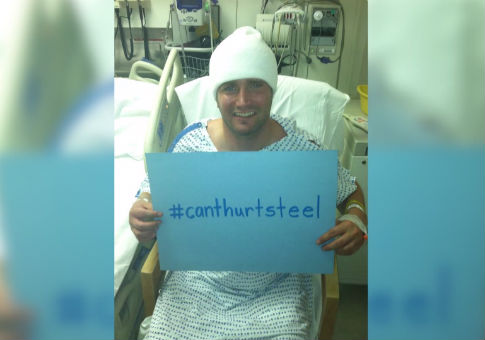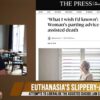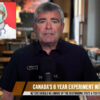
World News Group 28 May 2016
Family First Comment: “When you were the sickest in your life, how well were you thinking at that time? Not good, right? Now multiply that exponentially. … Put [the drugs] in a glass of beer, done. In that moment of weakness and difficulty and stress, done. … I don’t think I would have done that, but there’s many people who could’ve or would’ve in that situation.” J J Hanson
J.J. Hanson, 35, is a tall former Marine from New York’s Hudson Valley who did a tour in Iraq. He speaks so quickly and sharply that someone meeting him for the first time wouldn’t know that two years ago he couldn’t talk, walk, read, or write.
The loss of Hanson’s basic functions came shortly after a shattering diagnosis for a man with a wife and a young son. In 2014, out of the blue, Hanson had a seizure while he was at work. Doctors discovered he had stage 4 glioblastoma (GBM), one of the deadliest forms of brain cancer—and the same kind of cancer that assisted suicide advocate Brittany Maynard had when she ended her life in late 2014.
Three different doctors told Hanson his case was terminal and said he had four months to live. But he was determined to do aggressive treatment anyway. Doctors operated on his brain, which led to nine seizures in a day and his “cognitive loss” of basic functions. He joined a clinical trial. In order to recover from his cognitive loss, Hanson read children’s books, slowly working back up to adult reading.
Now he has survived two years—walking, talking, reading, and writing—and he is in what he calls remission, although he calmly admits that with GBM, there is really no such thing as remission.
Hanson, who worked in New York state government before turning to the private sector, had not given much thought to the issue of assisted suicide until he had a terminal disease. Now he is leading efforts against physician-assisted suicide legislation around the country with the organization Patients’ Rights Action Fund. New York is currently considering two bills to legalize the practice. California, Oregon, Vermont, and Washington have already made it legal.
AT MONTH FIVE OF HIS TREATMENT, the normally irrepressible Hanson became depressed. He says he lay in his bed and asked himself if he should give up, if it would make things easier for everyone if he were gone. He decided to continue—but then he imagined what others in his position might do.
Under the current New York proposals, a patient like Hanson could go to a doctor when he received a terminal prognosis and, if he were in a good mental state, receive a prescription for the lethal drugs. Then the patient could go home and put the drugs on his nightstand for whenever he might reach that desperate moment.
“When you were the sickest in your life, how well were you thinking at that time?” Hanson asked. “Not good, right? Now multiply that exponentially. … Put [the drugs] in a glass of beer, done. In that moment of weakness and difficulty and stress, done. … I don’t think I would have done that, but there’s many people who could’ve or would’ve in that situation.”
At the state Capitol Hanson walked the halls with a black binder under his arm, filled with articles and notes about assisted suicide data. He needs the binder to remember things after the surgery nicked certain circuits in his brain. Before cancer, he says, he could remember the specific details of almost every person he met. Now, sometimes he forgets the names of family members, though he is still quick to recall most information.
Speaking helps him speak, so he speaks with legislators. He emphasizes how legalizing assisted suicide will change social norms, legitimizing the general practice of suicide. A new report from the Centers for Disease Control and Prevention shows a 24 percent increase in suicides over the last 15 years, after 15 years of declines. The rate of increase is also higher in recent years.
Hanson also emphasizes to legislators how assisted suicide will shrink an already small pool of terminal patients willing to participate in clinical trials. As it is, glioblastoma patients rarely live long enough to participate in a trial, so the pool of those who can participate in research that might help future patients is tiny. This session at least, it looks as if Hanson’s arguments are helping to keep the legislation from passing.
“I think we will be fighting this bill for 20 years,” said Hanson. “I don’t think it’s going away.”
READ MORE: https://world.wng.org/2016/05/unequal_protection



